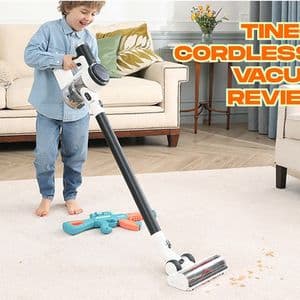Why Understanding Vacuum Cleaner Reviews Matters
Vacuum cleaners have evolved far beyond basic dust removal. Today’s models offer advanced filtration, smart navigation, and specialized attachments. Reading or writing a proper review vacuum cleaner guide can help you interpret what truly matters before making a choice.
But here’s the thing—many reviews focus too much on brand or price rather than practical performance. That’s why knowing how to assess a vacuum cleaner is just as important as the review itself.
Core Factors to Consider in a Vacuum Cleaner Review
When breaking down a vacuum cleaner’s performance, it’s helpful to use a structured approach. Let’s walk through the main aspects.
Suction Power and Cleaning Performance
Suction strength directly impacts cleaning effectiveness. A vacuum cleaner with best suction is not always the one with the highest wattage; airflow efficiency and nozzle design also play major roles.
You’ll want to note how the vacuum performs on different surfaces—hard floors, carpets, and rugs. Try to observe if suction drops as the dustbin fills, or if it maintains consistent performance.
Filtration and Dust Containment
Clean air output matters, especially for allergy sufferers. High-Efficiency Particulate Air (HEPA) filters can trap tiny particles like pollen and pet dander.
A detailed review should check whether the vacuum is sealed to prevent dust from leaking back into the air. Bonus points if the filter is washable and easy to maintain.
Maneuverability and Weight
Think about daily usability. Is it easy to carry upstairs? Can it navigate around furniture without constant repositioning?
Cordless vacuums offer better mobility, but run time might be limited. Corded models typically have more consistent power but can feel restrictive in small spaces.
Attachments and Accessories
Attachments can transform a vacuum’s capabilities. Crevice tools, upholstery brushes, and motorized pet hair tools each have specific uses.
A thorough review should explain how each accessory performs in real-world conditions—not just list them.
Noise Levels
Noise is often overlooked, but it can be a dealbreaker for households with children, pets, or night-shift workers. Testing decibel levels gives an objective measure, while subjective notes on pitch or tone add context.
Read more: What is The Best Hoover
How to Read Between the Lines in Vacuum Cleaner Reviews
Not all reviews are created equal. Some highlight only pros, others focus on faults.
Look for:
-
Test conditions – Were carpets thick or low-pile? Was pet hair included?
-
Long-term performance – Did the reviewer test it for weeks or just hours?
-
Maintenance notes – How easy is it to empty the bin or replace filters?
By recognizing these cues, you can separate marketing fluff from genuine insight.
Common Types of Vacuum Cleaners Reviewed
Different vacuum categories serve different needs. Understanding each type will help you interpret reviews more accurately.
Upright Vacuums
These are known for strong suction and wide cleaning paths. Reviews often emphasize carpet performance and storage considerations.
Canister Vacuums
Praised for versatility, they excel on stairs and under furniture. Reviews may discuss hose flexibility and portability.
Stick Vacuums
Lightweight and often cordless, stick vacuums shine in quick cleanups. A review should mention battery life, charging time, and floor-type compatibility.
Robotic Vacuums
These are valued for automation. Reviews should detail navigation efficiency, mapping technology, and how they handle obstacles.
The Role of Testing in a Reliable Review
Here’s where it gets interesting—objective testing can make or break a review’s credibility.
Professional reviewers often measure:
-
Suction in kilopascals (kPa)
-
Dust pickup percentage on different floor types
-
Battery life under maximum suction settings
-
Bin emptying ease and hygiene
When you see these details in a review, it means the writer has invested time in genuine testing.
Matching Reviews to Your Cleaning Needs
Even the most detailed review won’t help if it doesn’t match your reality. For example, the best budget vacuum for carpet may excel in one setting but underperform on hard floors.
That’s why you should filter reviews based on your home’s layout, floor types, and cleaning frequency.
Avoiding Review Bias
Here’s the truth: some reviews are influenced by sponsorships or brand loyalty. To spot bias:
-
Compare multiple sources before trusting one opinion.
-
Look for specific data instead of vague praise.
-
Read both positive and negative comments from real users.
Balanced reviews provide a fuller picture of the vacuum’s strengths and weaknesses.
Interpreting User Feedback vs. Professional Testing
User reviews offer real-world experience, but can be inconsistent. One person’s “too noisy” might be another’s “quiet enough.”
Professional testing, on the other hand, brings standardized evaluation but may not capture long-term reliability. The best approach is to combine both perspectives.
Cleaning and Maintenance Insights in Reviews
Maintenance plays a huge role in long-term satisfaction. A review that mentions clogging frequency, filter washing ease, or brush roll cleaning tips is more valuable than one that ignores these details.
You’ll also want to note if replacement parts are easy to find and reasonably priced.
The Value of Long-Term Reviews
Immediate impressions can be misleading. A vacuum may seem powerful at first but lose efficiency after a few months. Long-term reviews reveal how well the machine handles wear and tear, battery degradation, and recurring issues.
Red Flags in Poor Vacuum Cleaner Reviews
Watch out for:
-
Overly generic language with no specifics
-
Lack of testing or real-life scenarios
-
Focus only on brand reputation without mentioning features
These often signal low-quality reviews that won’t help your decision-making.
Final Thoughts
When you know how to interpret a review vacuum cleaner article, you gain a clearer understanding of what really matters.
The process involves looking beyond brand names and marketing claims, focusing instead on measurable performance, usability, and durability. With these skills, you can confidently navigate the vast sea of vacuum cleaner information—and make sense of it all.










